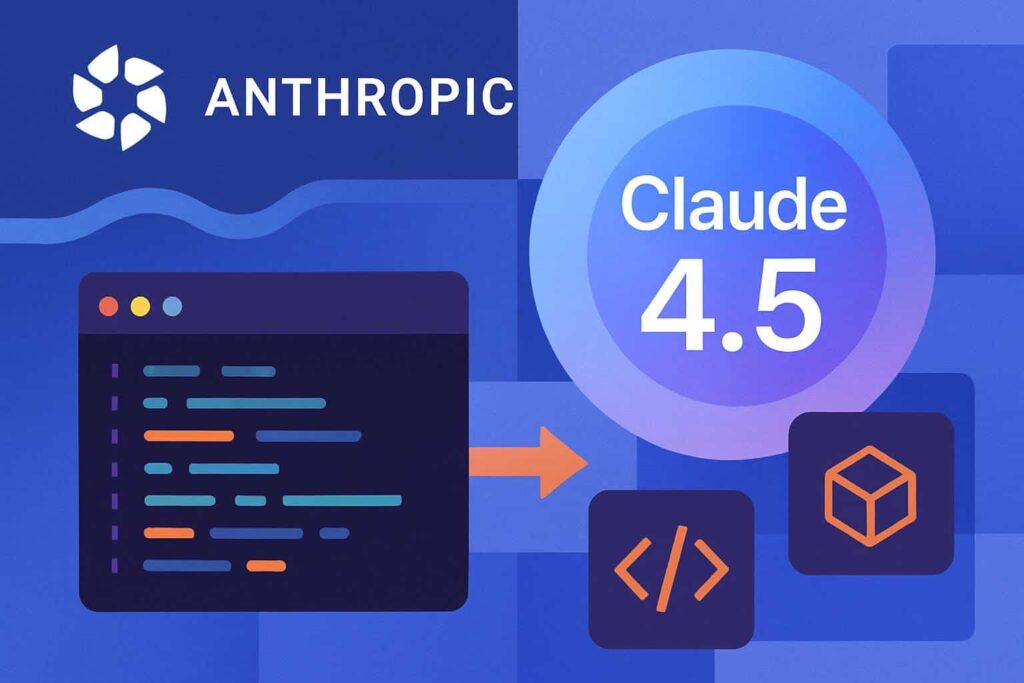Amid the rapid advances in generative artificial intelligence, the recent unveiling of Claude Sonnet 4.5 by Anthropic marks a significant milestone not only for its developer but for the entire tech industry. This latest AI model has been positioned as a groundbreaking tool for computer programming, showcasing substantial upgrades in coding capabilities and autonomous performance. The implications of Claude Sonnet 4.5 extend deeply into an already competitive arena, where the intersection of AI and automation is driving transformative business models and operational efficiencies. It is crucial for SMB leaders and automation specialists to analyze this development in the context of existing tools and platforms like Make and Zapier, as well as the competition posed by OpenAI.
When it comes to automation platforms, Make and Zapier are often at the forefront. Make, once known as Integromat, distinguishes itself with its visually intuitive interface, allowing users to create complex workflows without extensive programming knowledge. Its strength lies in its capability to handle intricate scenarios involving multiple steps and conditional logic, which can be appealing for SMBs looking to streamline complex processes. However, this sophistication can also present a learning curve, leading to longer initial implementation times.
On the other hand, Zapier is renowned for its simplicity and ease of use. With integrations across a vast array of applications, Zapier enables users to automate tasks quickly, often in a matter of minutes. Its standout feature is the ability to automate recurring tasks seamlessly, a strong point for SMBs with repetitive workflows. Nevertheless, while Zapier excels in speed and accessibility, it may lack the depth of customization offered by Make, potentially limiting its utility for businesses with more complex automation needs.
Cost considerations are critical when deciding between these platforms. Make operates on a subscription model, where costs are generally tied to the number of active scenarios and the volume of data processed, making it a cost-effective choice for small businesses that need comprehensive automation capabilities. Zapier uses a tiered pricing strategy based on the number of tasks executed per month, which can add up quickly as business needs grow. This disparity in pricing models means that businesses must weigh the frequency and complexity of their automation needs against the associated costs of each platform.
In the realm of AI, the comparison between OpenAI’s models and Anthropic’s Claude Sonnet 4.5 presents another layer of complexity for decision-makers. OpenAI has gained significant traction with its language models, which have shown an incredible ability to generate human-like text and perform various programming tasks. The flexibility and adaptability of OpenAI’s tools make it suitable for a wide range of applications—from content creation to customer service automation. However, the nuances in licensing and usage limits can lead to scaling challenges, especially for businesses looking for a more predictable cost structure.
In contrast, Anthropic’s Claude Sonnet 4.5 aims to enhance the programming capabilities available across platforms, positing itself as a more specialized solution geared toward software development and engineering tasks. Capable of producing both code and contextually relevant suggestions, it promises improved efficiency in programming workflows. However, the early-stage release means that businesses evaluating this tool must also consider its maturity and reliability in production environments.
Return on investment (ROI) is a crucial factor in determining the long-term viability of both automation and AI solutions. Make and Zapier allow SMBs to reduce operational overhead through automated tasks, which can lead to significant time savings and error reduction. The initial investment in either platform may appear high, but the subsequent gains in productivity typically justify the costs. Similarly, businesses investing in AI tools like Claude Sonnet 4.5 must evaluate expected productivity improvements against subscription fees and potential risks associated with adopting new technology.
Scalability remains another decisive factor for SMB leaders. Both Make and Zapier offer businesses the flexibility to expand as their automation needs grow, though Zapier’s simpler setup may make it more appealing to businesses in their early stages. In contrast, companies with advanced programming requirements may find that the depth of Make’s functionalities better supports their long-term goals. On the AI front, businesses must consider the adaptability of solutions like Claude Sonnet 4.5 for future applications, especially in the constantly evolving landscape of software development.
In conclusion, the release of Claude Sonnet 4.5 by Anthropic raises important considerations for SMB leaders and automation specialists. The strengths and weaknesses of platforms like Make and Zapier reflect the ongoing transformation in workplace automation, signaling that the choice of tools will depend heavily on individual business requirements. Future-oriented decision-making will hinge on weighing costs against functionality while remaining cognizant of how AI innovations can enhance operational efficiencies.
FlowMind AI Insight: As the capabilities of AI models like Claude Sonnet 4.5 mature, businesses can benefit from an evolved landscape of automation tools that synergize with these advancements. Proactive investment in both AI and automation platforms can yield significant operational efficiencies, making careful analysis of features and ROI paramount for sustainable growth.
Original article: Read here
2025-09-30 17:44:00

